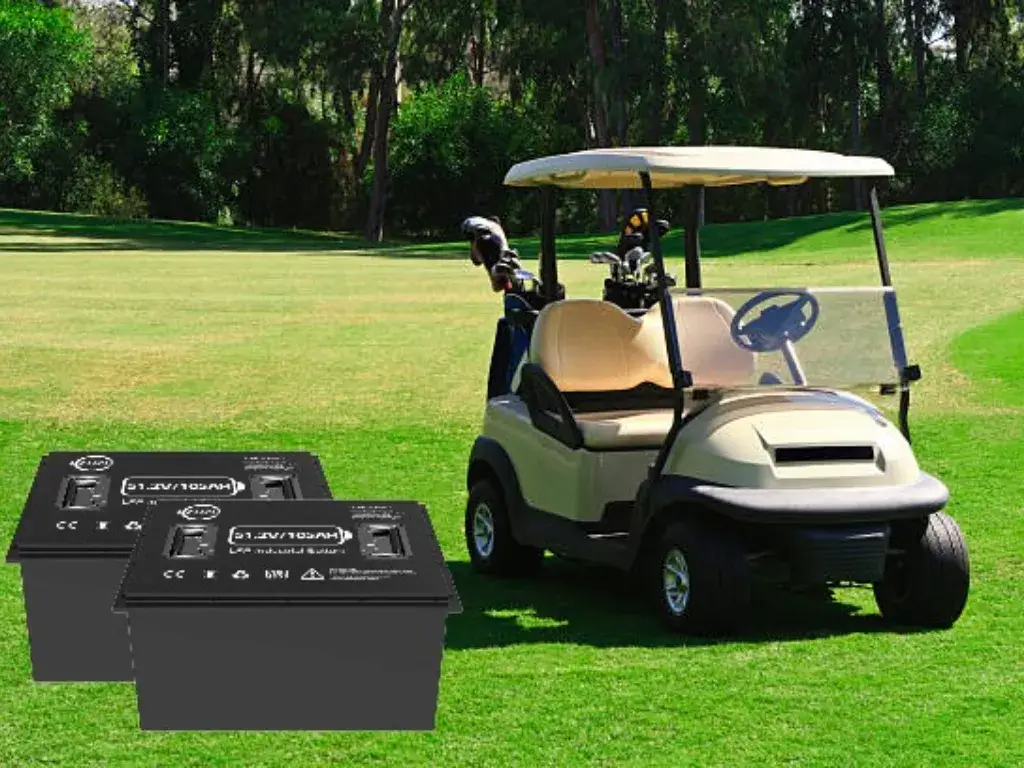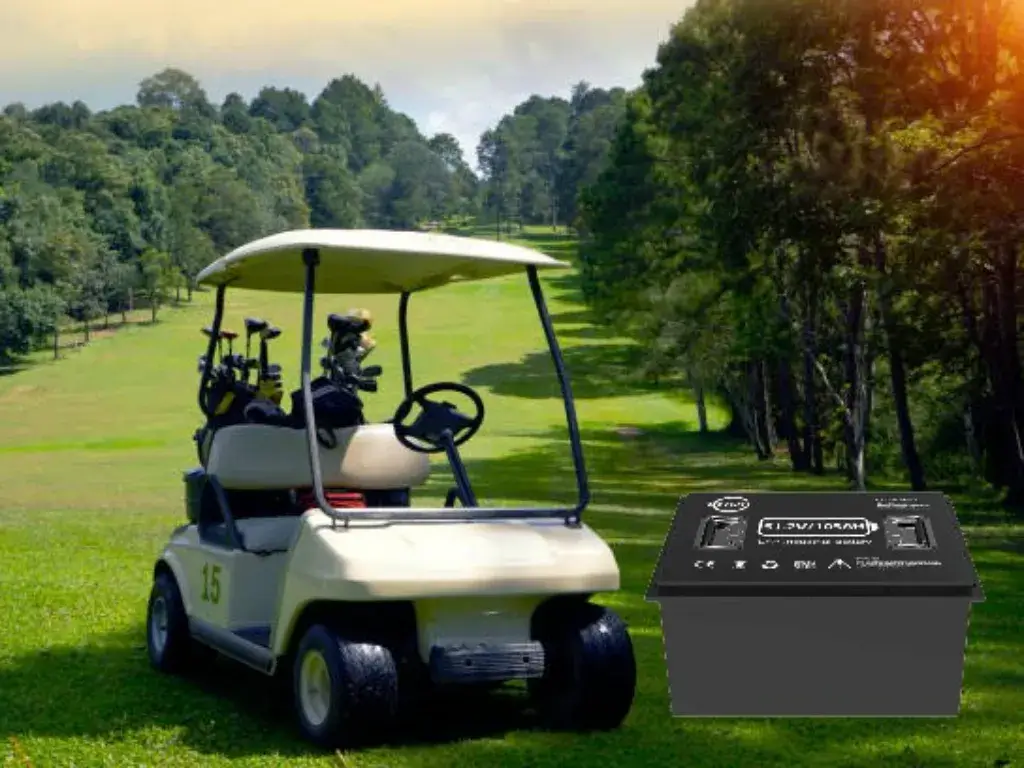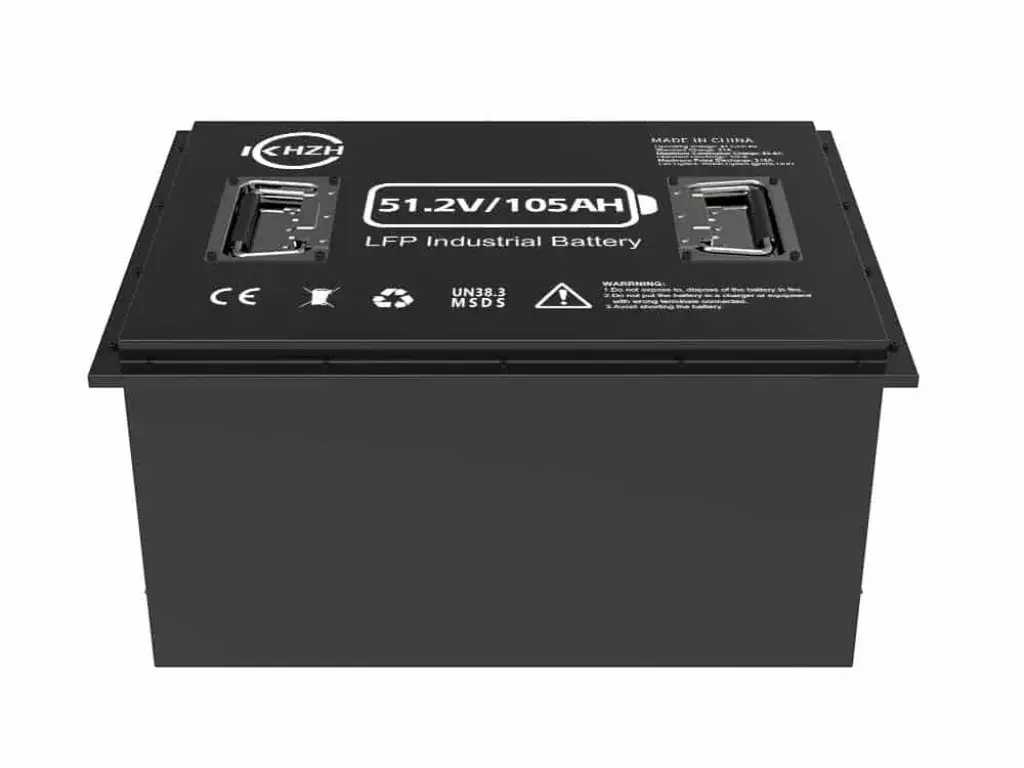Embarking on a serene morning of golf only to find your cart powerless mid-course can disrupt an otherwise perfect day. The dependability of your golf cart hinges on the silent workhorse stowed beneath the seat – the battery. To ensure uninterrupted drives down the fairway, identifying what affects your battery’s charge capacity is critical. Dive into our guide, as we explore how long do golf cart batteries last and the factors that ensure your golfing adventures never come to an unexpected halt.

What are Golf Cart Batteries?
Golf cart batteries are specialized rechargeable batteries that power electric golf carts. They’re designed to provide a dependable and steady source of energy, ensuring your golf cart can move you and your equipment around the course or through various terrains if used for other purposes. Typically, these batteries are deep cycle types, capable of being depleted and charged up again numerous times, unlike regular car batteries that deliver a quick burst of energy to start an engine. Golf carts usually require multiple batteries linked together to form a system that delivers enough voltage and capacity for the vehicle’s needs. They come in different varieties, such as lead-acid and lithium-ion, each with distinct attributes, lifespans, and energy storage capacities.
Types of Golf Cart Batteries
Golf cart batteries are the heartbeat of every cart, and selecting the right type can influence the efficiency and longevity of your ride.
Lead-Acid Batteries
Lead-acid batteries have been the traditional choice for many years, appreciated for their robustness and cost-effectiveness. They function by a chemical reaction that takes place between lead plates and an electrolyte solution, predominantly comprising sulfuric acid. These batteries are typically rated for 500 to 800 charge cycles, considering that proper maintenance like avoiding deep discharges is carried out. They require regular checks of water levels and should be kept at a full charge to prevent battery damage and extend battery life.
Lithium-Ion Batteries
Lithium golf cart batteries represent a newer technology with several advantageous traits including a lighter weight, a faster charge time, and no need for maintenance such as adding distilled water. Their energy capacity is higher than lead-acid variants, resulting in better acceleration and the ability to cover longer distances on a single charge. While they can be costlier upfront, lithium batteries often boast a longer lifespan, they can effectively handle upwards of 3000 charge cycles, and in some cases, even higher, therefore providing value for money in the long run.

How Long Do Golf Cart Batteries Last?
The lifespan of your golf cart batteries can vary quite a bit, depending on the type of battery and how you treat them. Your typical lead acid batteries might stay strong for about 5 to 7 years, while lithium golf cart batteries could keep up the pace for up to 10 years. Remember though, these numbers aren’t set in stone. If you don’t charge them regularly, let them sit in really hot or cold weather, or hardly use them, they won’t last as long. But if you’re on top of things with routine care and steady charging, you could be cruising the course for years longer than average.
How Long Do Golf Cart Batteries Last on One Charge?
The duration of how long golf cart batteries last on one charge varies based on the battery’s age, its energy capacity, and typically, the terrain of the golf course. Most new golf cart batteries, when fully charged, can last for 36 holes of golf – roughly equivalent to two rounds of golf or about 7-10 miles. As batteries age, their capacity to hold a charge decreases, thus reducing the miles they can cover. Keeping them at a full charge when in use is vital for ensuring they last longer during each round of golf.
Factors Affecting Golf Cart Battery Lifespan
There are lots of factors that may influence the lifespan of golf cart batteries:
| Key Factors | Description |
| Battery Type | Lead-acid batteries, owing to their design, require regular maintenance to ensure a longer lifespan, which on average ranges between 5 to 7 years. Lithium batteries, being maintenance-free and having a higher energy density, offer a longer battery lifespan which can extend up to 10 years under optimal |
| Usage Patterns | Frequent starts and stops, driving over hilly terrain, or towing heavy payloads – these usage patterns can influence the longevity of your golf cart battery. Whether you use it for short trips with light loads or for intense utility work, understanding your usage pattern is key to estimating how long should a golf cart battery last for your specific needs. |
| Maintenance | From checking water levels in lead-acid batteries to ensuring terminals are free from corrosion, proper maintenance directly impacts battery life. Golf cart owners should adhere to the recommended maintenance schedule provided by the battery manufacturer. |
| Charging Habits | Overcharging or undercharging leads to battery damage, so abiding by proper charging protocols is crucial. A charger that matches the battery’s voltage and is specifically designed for the battery type can help in ensuring a longer lifespan. |
You May Like: How to fix a dead lithium ion battery?

Signs Your Golf Cart Battery Needs Replacement
Keeping a watchful eye on your golf cart’s battery condition is key to avoiding unexpected downtimes and ensuring a pleasant golfing experience. There are several telltale signs that may suggest it’s time to replace your golf cart batteries. Here’s what to look out for:
Decreased Run Time
If you find that your golf cart is not covering the distances it used to on a single charge, or if it’s dying out before completing a game, it’s a strong indication that the battery’s ability to hold a charge is fading.
Slower Acceleration
Should you notice that the cart is sluggish and doesn’t accelerate as swiftly as before, this could signal that the batteries are no longer capable of delivering the necessary power for optimal performance.
Difficulty Holding a Charge
When a fully charged battery discharges quickly with minimal use, or if your cart no longer reaches a full charge, these are classic signs of a worn-out battery.
Visible Wear and Damage
Regular inspections may reveal physical deterioration such as swelling, cracking, or warping of the battery case, as well as corrosion around the terminals – all signs that the batteries may need to be replaced.
Leaks
Any sign of leaking, such as the presence of wet spots or corrosion in the battery compartment, is a serious concern and usually signifies that the battery’s integrity has been compromised.
Tips For Maximizing Golf Cart Battery Lifespan
Here are some practical tips for extending the life of your golf cart batteries, which is crucial for both the performance of your cart and keeping costs down. Paying attention to how you charge, store, and maintain your batteries can make a big difference in how long they last.
| Charging Tips for Golf Cart Batteries | Make sure to charge your batteries after each use to keep them at optimal energy levels.Watch out for overcharging, as it can harm your batteries.Every month and a half or so, give your batteries a top-up charge to keep them at full capacity. |
| Discharging Precautions | It’s a good idea to keep the battery charge above 50%.Try not to use more than 80% of the battery’s charge to avoid undue strain.When you’re out on the course, driving directly to your destination can help save battery life, especially compared to taking longer, more challenging routes. |
| Proper Storage of Your Golf Cart Batteries | Keep your batteries in a cool, dry place to avoid damage from extreme temperatures.If you’re not going to use your batteries for a while, a trickle charger can help maintain their charge without the risk of overcharging. |
| Routine Battery Maintenance | If you have lead acid batteries, it’s important to regularly check the fluid levels to ensure the lead plates are properly submerged.Ensure all cable connections are tightly secured and that there’s no buildup of dirt or corrosion on the battery terminals. |
Upgrading Your Golf Cart Battery to Lithium-Ion
When your golf cart starts to lag, it could be time to switch things up with a new battery. Lithium-ion is a top pick, especially for golfers. These power sources pack a punch, lasting way longer than the old-school lead-acid type and they don’t need much upkeep. Take Keheng’s batteries, for example. They’ve got all the juice you’ll need for your cart, whether that’s 36 or 48 volts. And they’re smart, too – with a killer Battery Management System (BMS) to keep the energy levels just right and stop any overcharge or too much drain. Imagine cruising through over 60 miles on one charge – that’s enough to go round the greens again and again. But here’s the coolest part: You can check on your battery from afar and keep it in top shape, which means you can hit the fairways confident that your ride won’t call it quits before you do.
Related Post: Revolutionize Your Golf Cart: Why These Are the Best Lithium Golf Cart Batteries Today
FAQs
How often should I charge my golf cart battery?
Make sure to charge your golf cart battery after each round to keep it ready to go. Staying on top of this keeps your battery from getting too low – we’re talking under 20% – which is key to making it last longer. Don’t hit the links much? Then charging your battery around every two weeks should do the trick.
Should I consider getting a lithium-ion battery for my golf cart?
Going for a lithium-ion battery upgrade is like giving your golf cart a new lease on life. These batteries can hang in there for the long haul, charge up quick, and won’t weigh your cart down. Sure, they might cost a bit more at first, but if you use your golf cart a lot, you’ll save time and effort on maintenance, which many folks find pretty sweet.
How long will my 36-volt golf cart battery last?
Your 36-volt golf cart battery should be good for about 4 to 6 years, but that’s if you take real good care of it. Stick to what the maker says about charging and keeping it maintained to get the most years out of it. That involves keeping the connections clean and making sure not to run the battery way down.
What’s the lifespan of a 48-volt golf cart battery?
With proper attention and regular rides, a 48-volt golf cart battery can keep you on course for about 5 to 7 years. Get the most out of your battery by sticking to a solid charging schedule, keeping it from getting too empty, and making sure those connections are squeaky clean and secure. Treat it with proper care, just like you would with a 36-volt, and you could even outpace the average lifespan.




